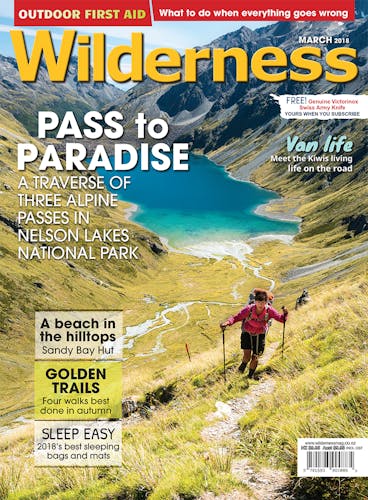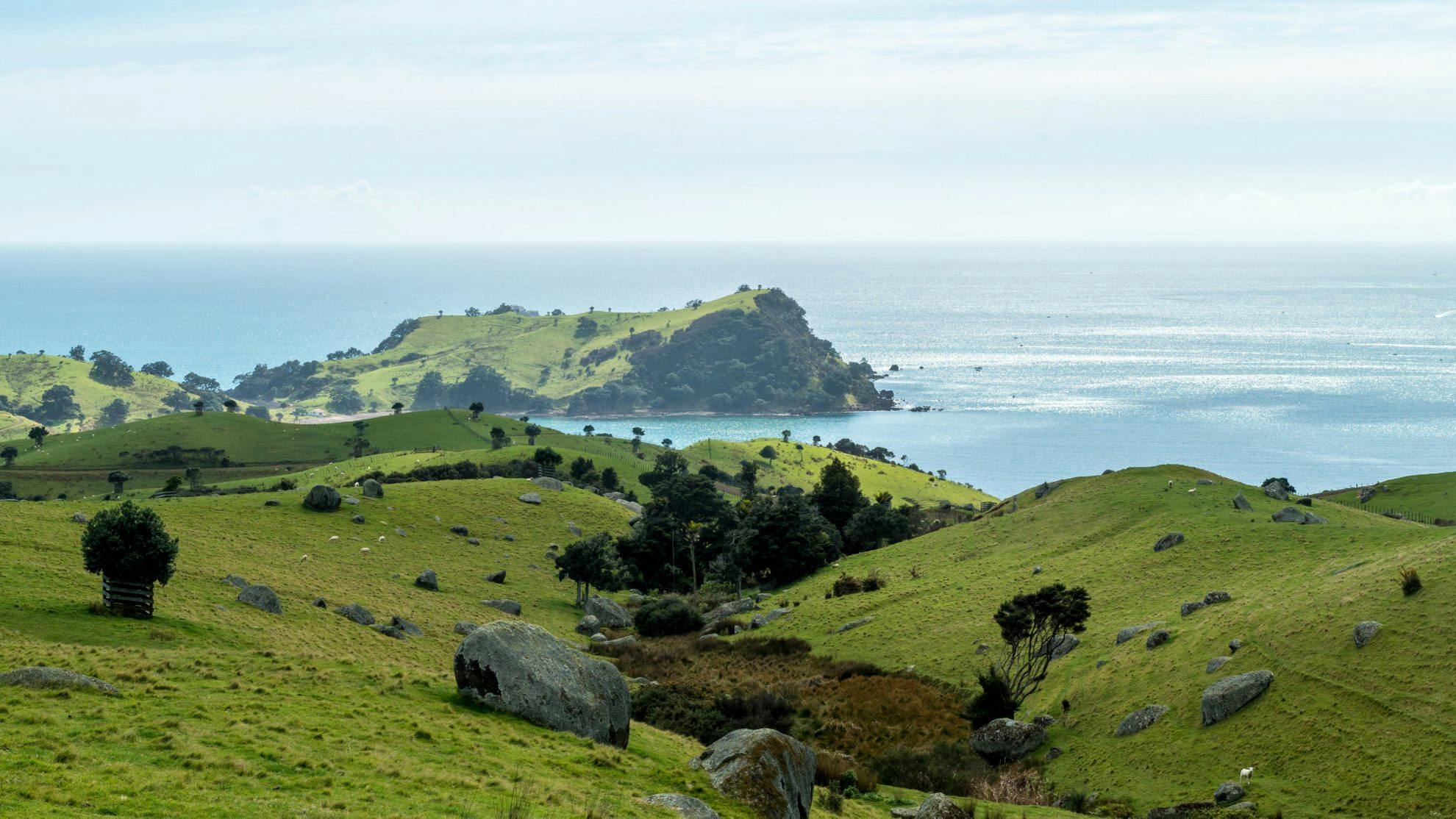- Time
- Stony Batter Historic Reserve: 40min; Return to Opopo Bay, 90min; Return to Hooks Bay, 90min
- Grade
- Easy
- Access
- From Stony Batter Road at the north-eastern end of Waiheke Island. The tunnel complex is a 15-minute walk from the locked gate
- Map
- BA33
Defending Auckland
Had you been an Auckland resident just before the Second World War, the problems of city living would not have revolved around traffic, house prices and crime. The greatest threat to your security would have been the possibility of a German cruiser sneaking into the Waitemata Harbour and lobbing shells over Motutapu, potentially destroying the city.
Walking along the access road to Stony Batter on Waiheke Island, I soon understood why the site was chosen for the lynchpin defences of Auckland City. The views not only stretch south to the Firth of Thames and Hauraki Plains, but in all directions from Cape Colville to Cape Rodney.
The farmed area is mottled with an arrangement of andesitic boulders, creating a curious landscape, interspersed with grazing sheep. The boulders, which give rise to Stony Batter’s name, were also used as aggregate for the vast quantities of concrete needed to construct the huge complex of underground fortifications.
Above ground, there are the remains of the guns to be explored, gun pits, ventilation shafts and derelict buildings. However, for the best appreciation of the immensity of the gun emplacement infrastructure, a walk through the vast underground network of tunnels is worthwhile, head torch attached.
During the 1930s, the government searched for possible gun battery and fort sites and realised if guns were constructed with a sufficiently long range at Stony Batter, they could block off Cape Colville to Kawau Island. With a twin set at Army Bay on the Whangaparaoa Peninsula, the guns could protect the northern entrance to the Gulf and provide a safe anchorage for Allied ships in Auckland waters. The guns had a range of 32km.
Tunnel systems unique to the contours of the land were designed, and 189 men were employed to dig the vast subterranean complex. Construction had to be kept secret – not an easy task when the gun barrels alone weighed 28 tonnes and were 12m-long.
The construction of 1km of tunnels (each surrounded by 30cm of concrete), three gun emplacements with associated underground magazines and explosives stores, control rooms, living quarters, engine rooms and a pump house was a logistical nightmare. The complex was supposed to be built in the 1930s but was put off because of the Great Depression. It was started in the early 1940s and finished in 1945/46, just in time for the end of the war.
I visited the partially restored bunkroom, used by staff who manned the guns, which now serves as an exhibition room and display centre at the tunnel entrance. This is in the process of being comprehensively restored by the Stony Batter Protection and Restoration Society, which also runs guided tours.
After exiting the gun pit, and allowing my eyes to recalibrate, I spied Kawau Island, a mere speck on the horizon. In the far distance would have been the guns at Whangaparaoa, catching enemy ships in a crossfire.
To complete the day, you can follow orange marker poles over farmland down to Opopo Bay, then back up and over to Hooks Bay, both nice spots for a summer swim.
Note: Check the tunnel opening days with the Auckland Visitor Centre on 09 379 6476








